Bug hotel ideas: 15 ways to give insects the 5* treatment
Check in with these bug hotel ideas which will attract pollinators and ensure a thriving garden that's full of bright blooms and delicious veg

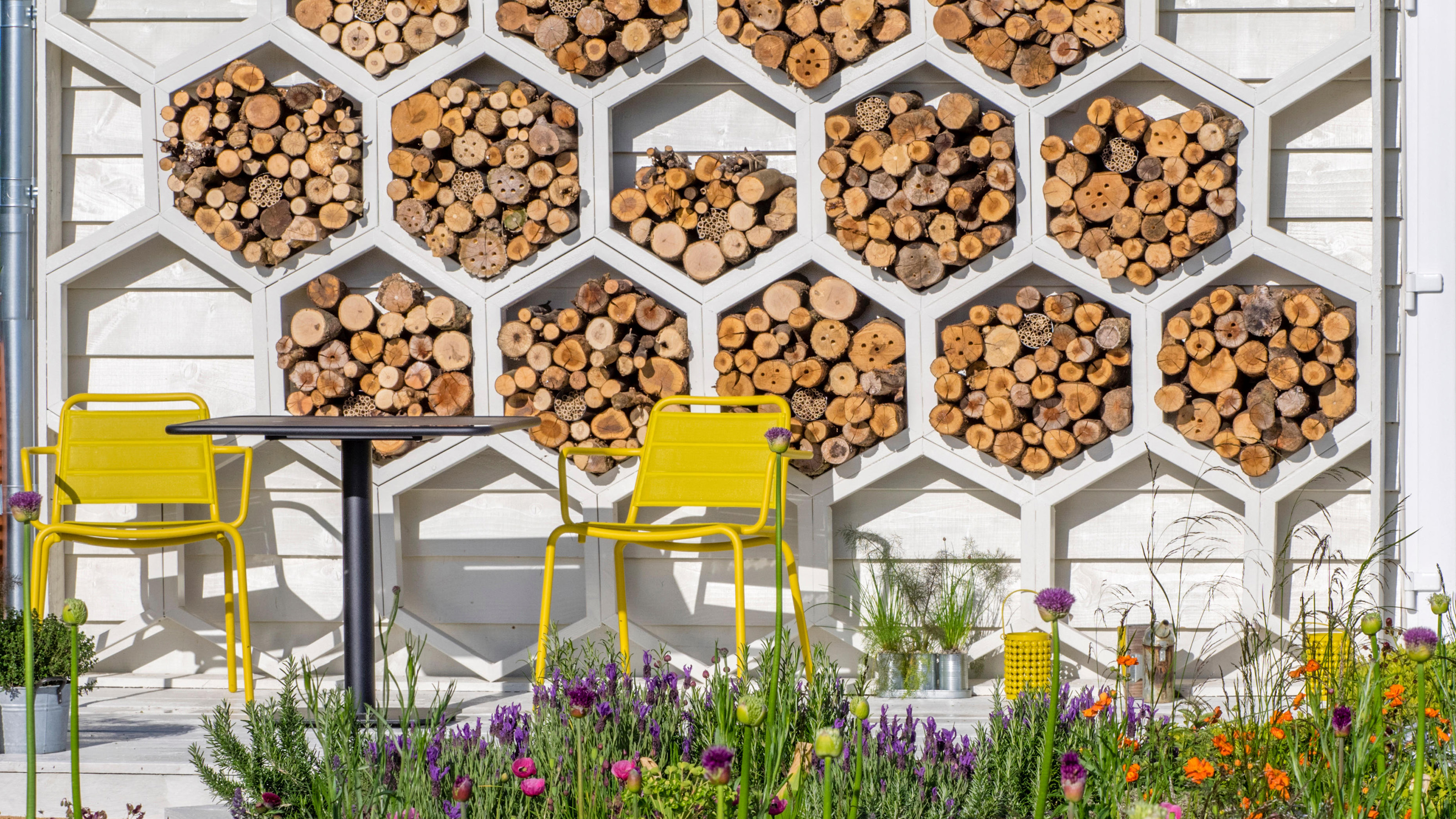
If you want an all inclusive garden then the latest bug hotel ideas will help ensure that it's packed with flourishing blooms and a thriving vegetable patch by enticing pollinators. Some of us may not be huge fans of buzzing bees and creepy crawlies but they play a critical role as part of our food and plant production and are hugely beneficial to the ecosystem.
'As more bees flock to your garden, they will fertilize your plants and ensure seeds are produced,' say the experts at The Greenhouse People. 'To invite more bees into your garden, you could install bee hotels. Although we typically think of bees as part of a hive, some bees are solitary and will lay their eggs alone in tunnel-like nests.'
Amateur Gardening expert, John Negas, is all for using bug hotels to boost our garden's production, plus they can play an important role when it comes to rewilding your garden too. 'A wide range of creatures, including mason bees, lacewings and ladybirds, will, in winter, hibernate within a bug hotel, and the more insects we have the better plants perform.'
Bug hotel ideas should be fun to make, and are ideal projects to do with kids. The fun part is getting creative with your materials and designs. You could also opt for ready made varieties and decorate them or leave them neutral. Soon you'll have all sorts checking in and they'll be returning the favor by improving your garden's health.
Help your garden to thrive with creative bug hotel ideas
These bug hotel ideas will encourage insects and pollinators to your plot and bring a touch of charm to your wildlife garden scheme too.
1. Build a bug hotel against a shed wall

The wall of a garden shed is a blank canvas which could become the ideal project for exercising your creativity. Using the wall to create an insect hotel might not be something you've considered before.
It could be as simple as incorporating individual bug hotels into your latest shed ideas, or you could go further and create a framework of shelves which can be built up to form different sections. Some of which could be stuffed with garden matter and other sections could be used for practical garden storage ideas.
2. Build into gaps in a wall

Whenever you're embarking on a new project for the garden, think about how you can utilize this opportunity to really maximize the space to get the most out of it. And as gardeners we will often want to consider our environmental contribution too and create an eco friendly garden.
Bug hotel ideas like this one will tick every box. If you're building a new boundary, incorporating insect havens is an ingenious garden wall idea. Making the most of your vertical spaces is a smart choice, particularly for compact plots. And the gaps in a wall are sufficiently sheltered enough to make an appealing spot for insects.
3. Keep it simple with a tin can design
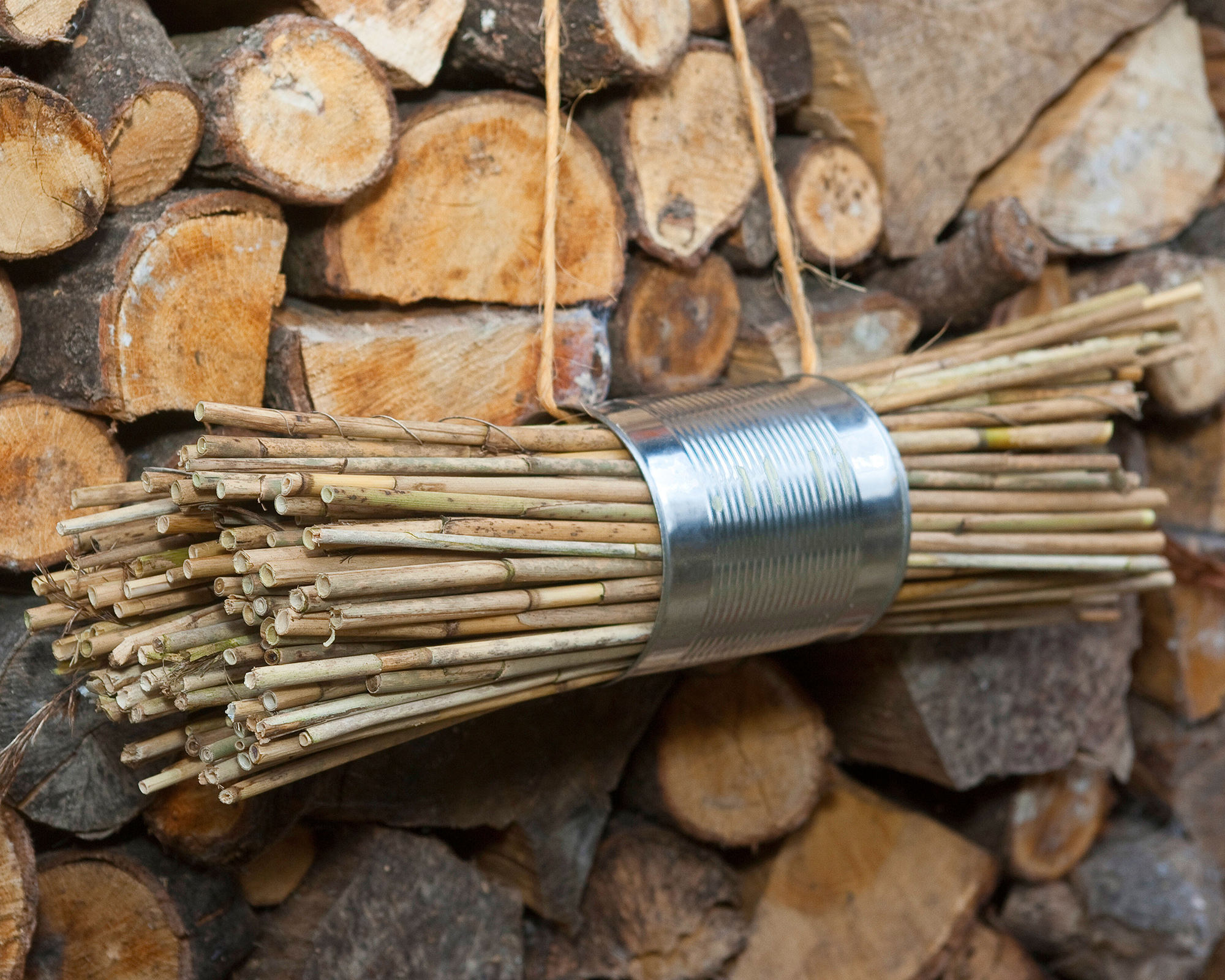
When we think of insect hotel ideas, you might picture something which resembles a bird house design. But simple designs like this can be just as effective at sheltering wildlife. And it makes good use of an everyday item from your household waste.
Instead of throwing out your tin can, remove the label and carefully clean it out and remove the base as well as the top. Thread a piece of garden twine through the can and leave a decent length which you will use to hang your project up with.
Secure the loop by tying the ends together. Stuff the tin can with lengths of bamboo, twigs or straw and hang in position.
You'll find plenty more cheap garden ideas like this one in our dedicated guide.
4. Choose a design which uses natural materials
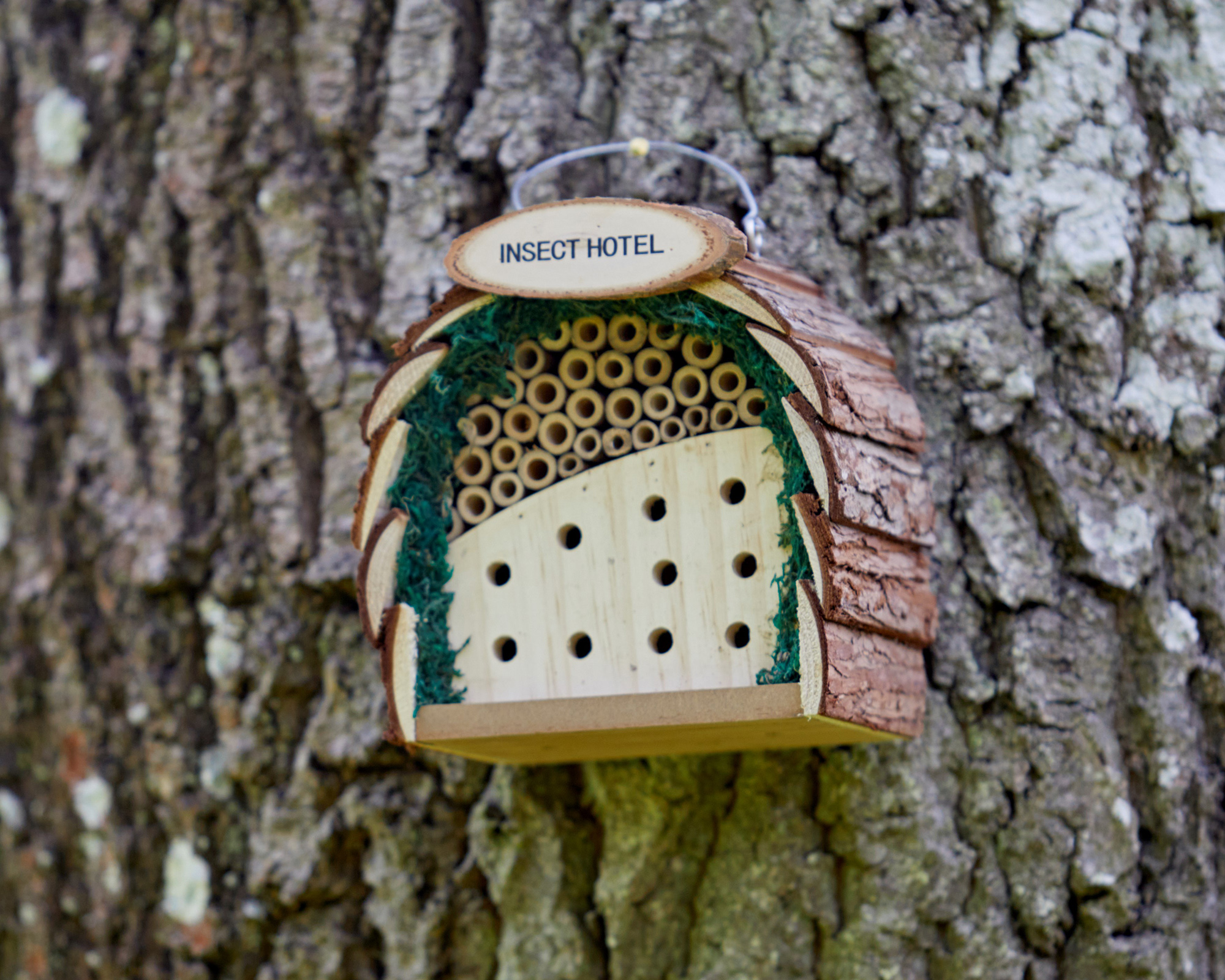
If you're buying a ready made insect house, try to opt for one which uses natural materials. Plastic is not an eco friendly material so try to avoid it if you're hoping to do some good to the environment by installing bug hotel ideas.
This natural wood insect hotel with bark roof from Gardenesque can be easily attached to a tree or a fence with a single nail.
5. Make use of fallen branches and tree logs
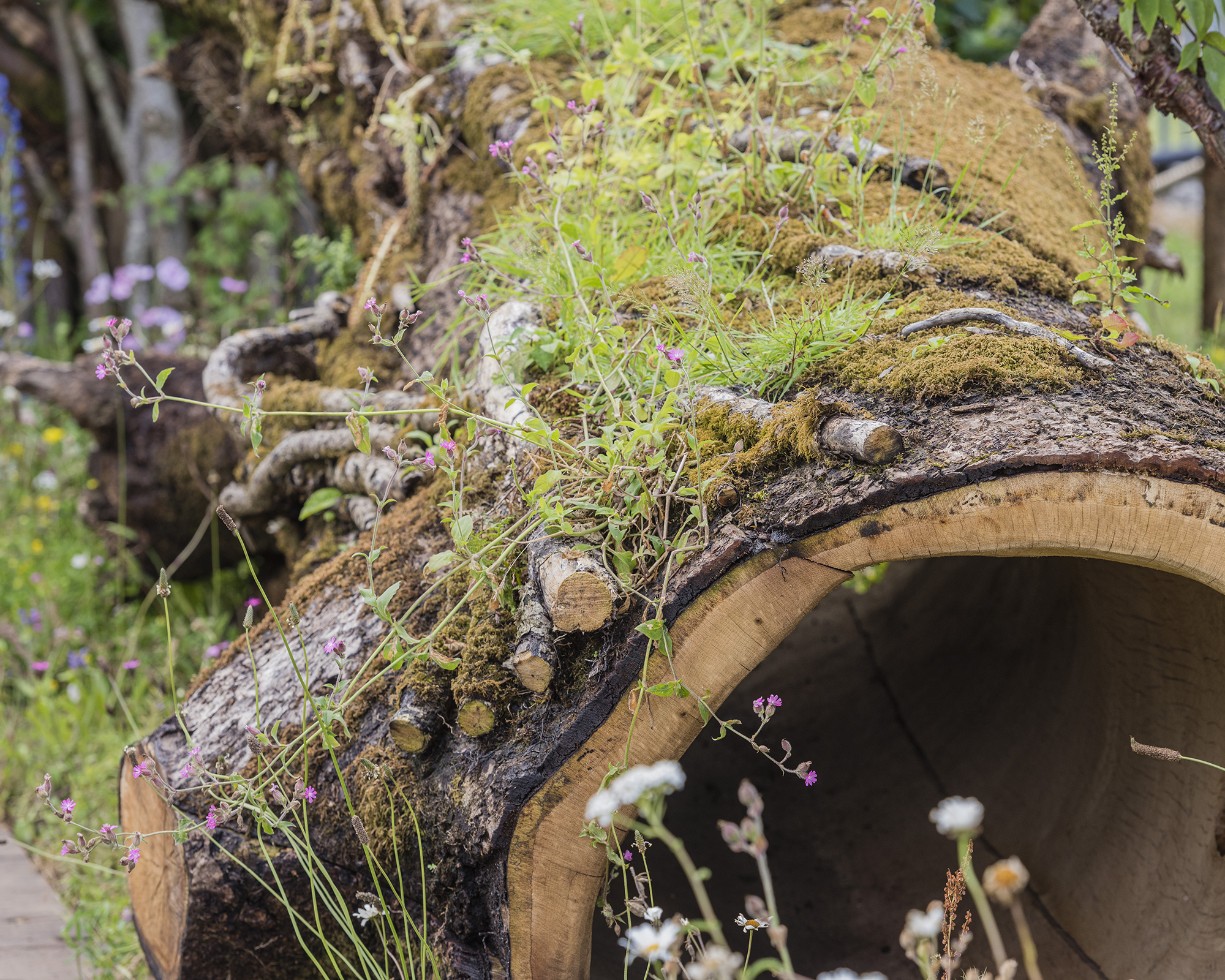
Sometimes it won't be necessary to build your bug hotel ideas from scratch. There could be a prime spot in your garden that you've not considered yet, which could make a comfortable home for insects.
'From putting up bird boxes to creating a shelter using leaves and twigs in an unused corner of your garden, it is important not to disturb these areas as wildlife will likely find a use for it,' says Simon Cowell MBE, Founder of Wildlife Aid Foundation.
For example fallen tree branches, tree stumps or logs left in situ are natural habitats for bugs. So instead of clearing them away, keep them in place and encourage moss and other plants to grow, for a living, breathing bug hotel.
6. Position near pollinator plants
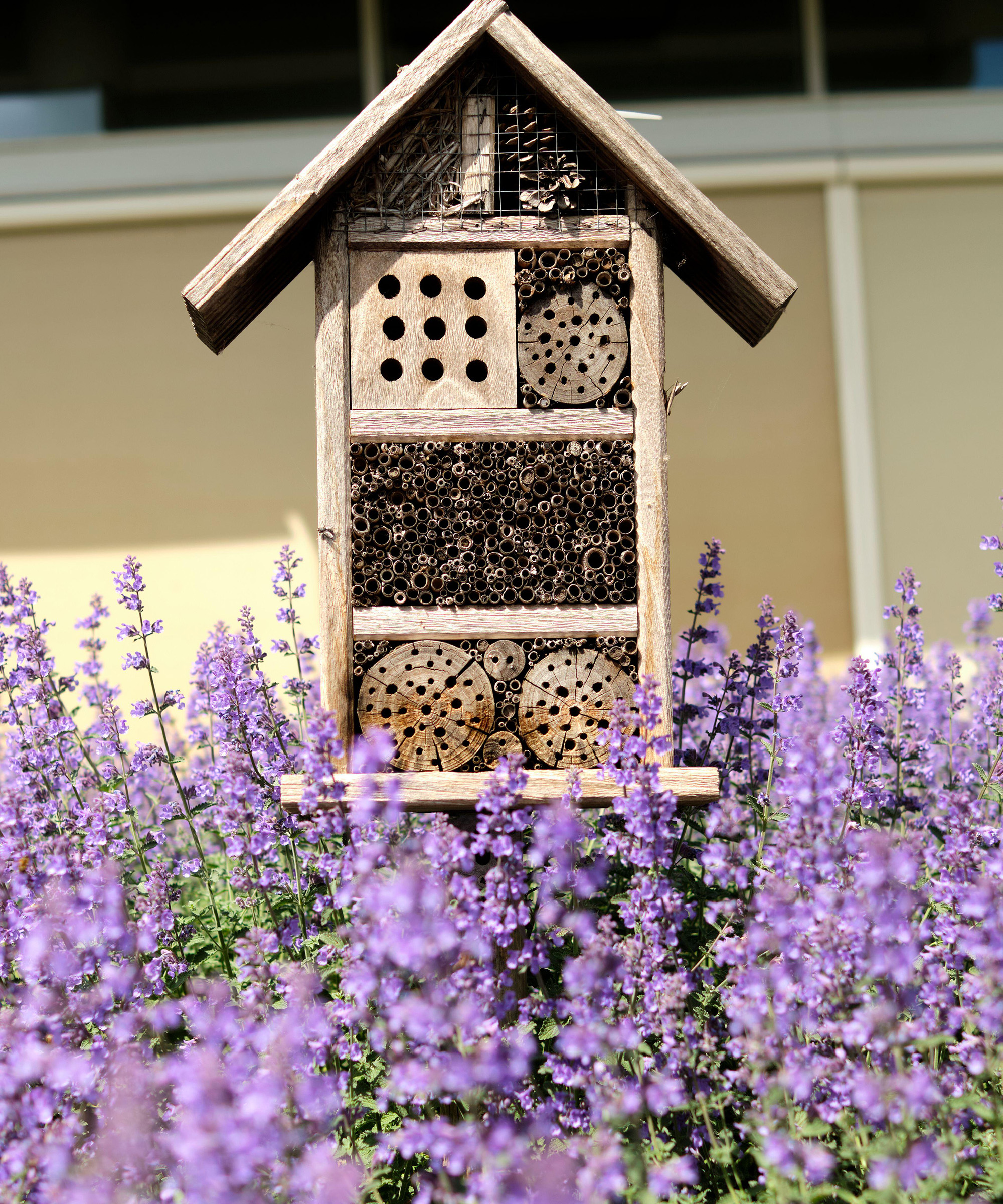
If you want to ensure you get plenty of guests checking into your insect hotel then there's no better advertisment than bee friendly plants growing in the vicinity. 'Native plants and wildflowers rich in pollen and nectar are the best for enticing bees, providing a floral buffet for them to feast on,' say experts at The Greenhouse People.
Growing the best plants for pollinators will attract bees and other insects to your garden and providing passers-by with a comfortable shelter will make them more likely to stop for an extended stay.
Remember that the presence of pollinators will improve your garden no end! Our guide on how to grow a butterfly garden is packed with expert tips to help you encourage even more to your plot.
7. Use unwanted bricks and planks
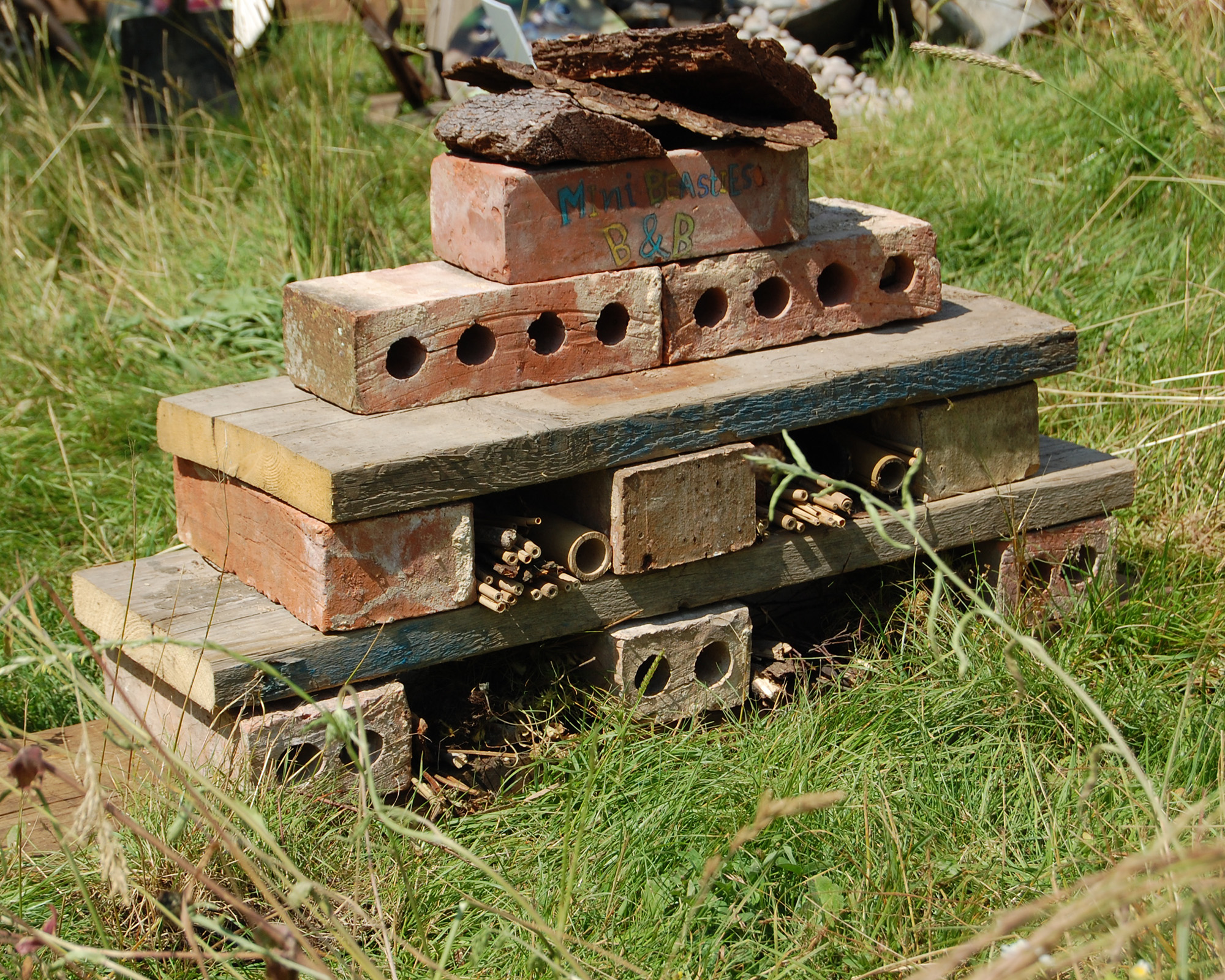
Hollie Newton, Chief Creative office at Sproutl, predicts we will see a greater appreciation for the benefits of insects in our gardens, with an increased demand for pollinator-friendly plants as well as a move towards using safer pest control products to reduce the impact on beneficial garden insects and wildlife.
And insect hotel ideas are yet another useful tool for helping this valuable wildlife. It doesn't take a great deal of skill to put together some pretty effective bug hotel ideas. Take this example which is made by stacking planks of wood on top of spare bricks.
Make the bottom wide and gradually get narrower as you go up. If you're not fixing the bricks and planks in properly be sure not to build your structure up more than two or three layers maximum. Stuff the cracks with twigs and leaves and keep it out of the way so you won't trip over it.
8. Combine with a bird house
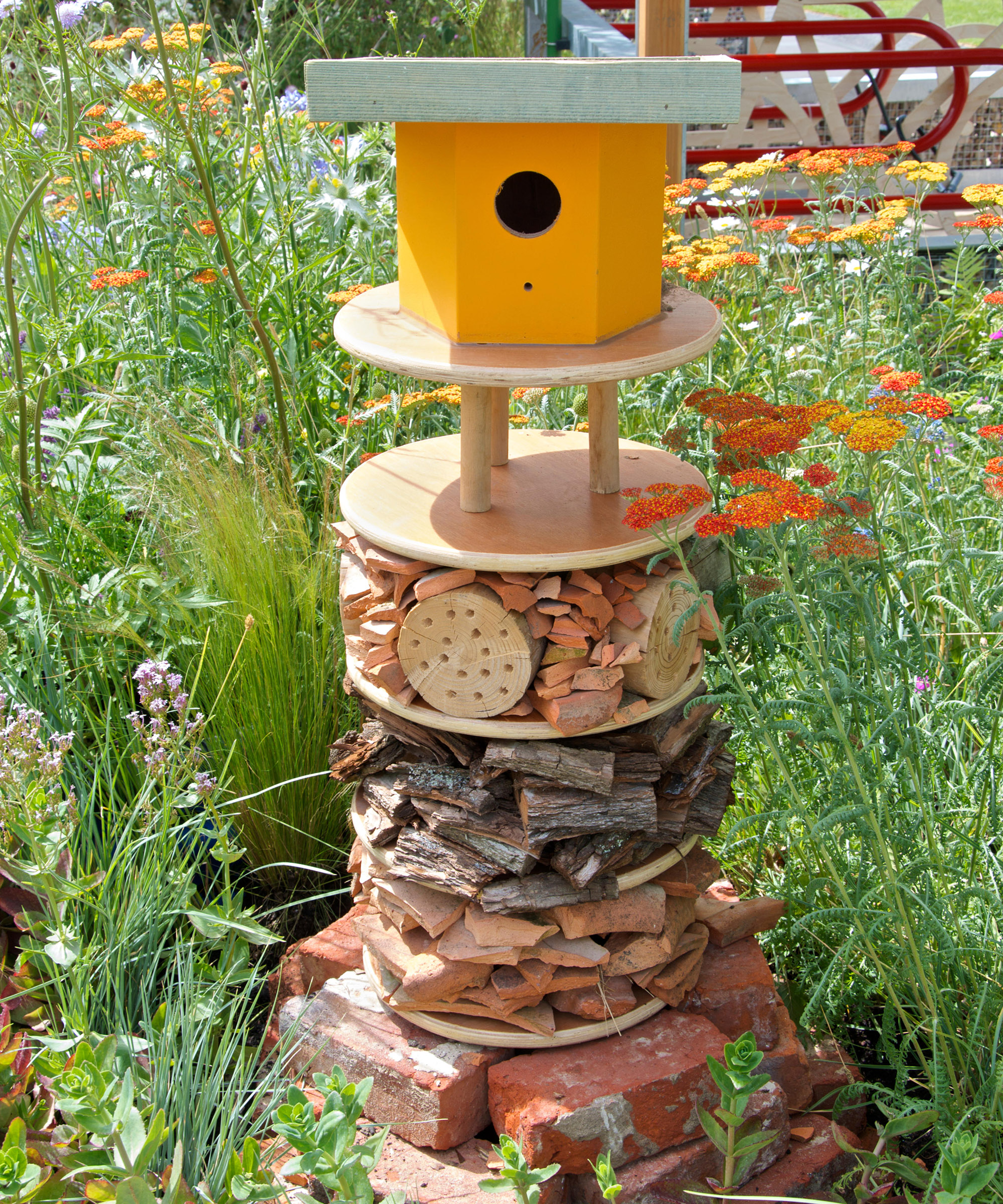
If you're setting aside some space for insects, why not welcome in birds while you're at it? Will Foulkes, product expert for Sproutl, comments: 'Water features made a splash at the Chelsea Flower Show, and the bird bath is now making a return.' He went on to say: 'new styles and designs have reimagined the humble bird bath. A top tip is to add a few copper pennies and this will help keep the water clean, as copper slows algae growth.”
This bug hotel design has a birdhouse mounted at the top of a column which has layers of broken tiles, twigs and aggregate to provide shelter for insects. To make it even more hospitable you could have a small water bowl on top which can be both a practical bird bath and a drinking source for feathered friends. Introducing water in this way is a simple way of giving your sensory garden ideas a boost too.
9. Color coordinate with your planting
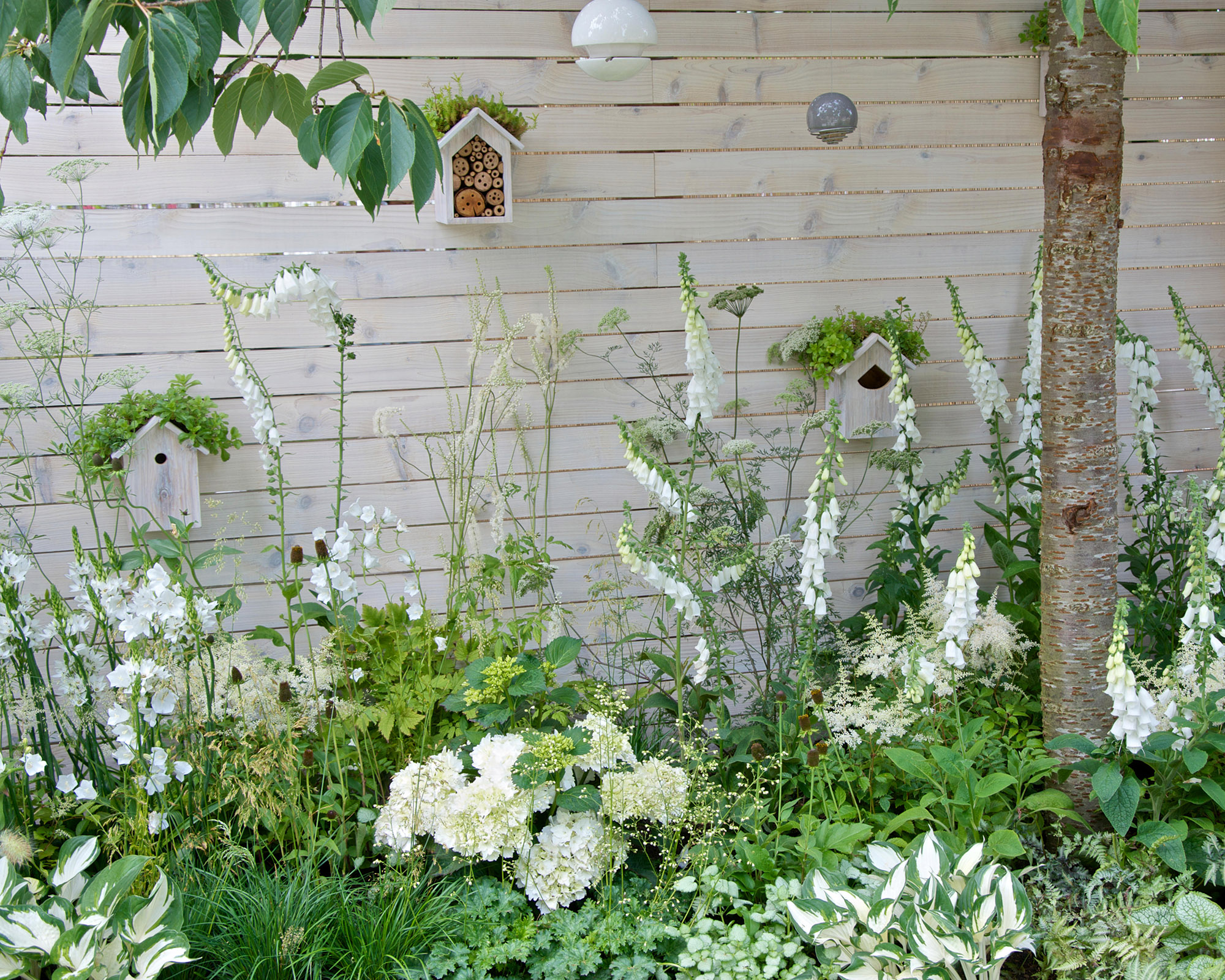
If you're someone who likes continuity in your garden design ideas then having a bug hotel which doesn't stick out like a sore thumb will be a key consideration. Selecting a color which fits with your planting and paint scheme will ensure that your style is kept consistent.
Take this lush green and clean white scheme. The bird houses and bug hotels are perfectly blended to the fence with a lick of white paint.
Though color palettes may be an important part of your aesthetic it's vital that you also provide flowers which are pollen rich in your planting schemes.
10. Drill holes in pieces of wood
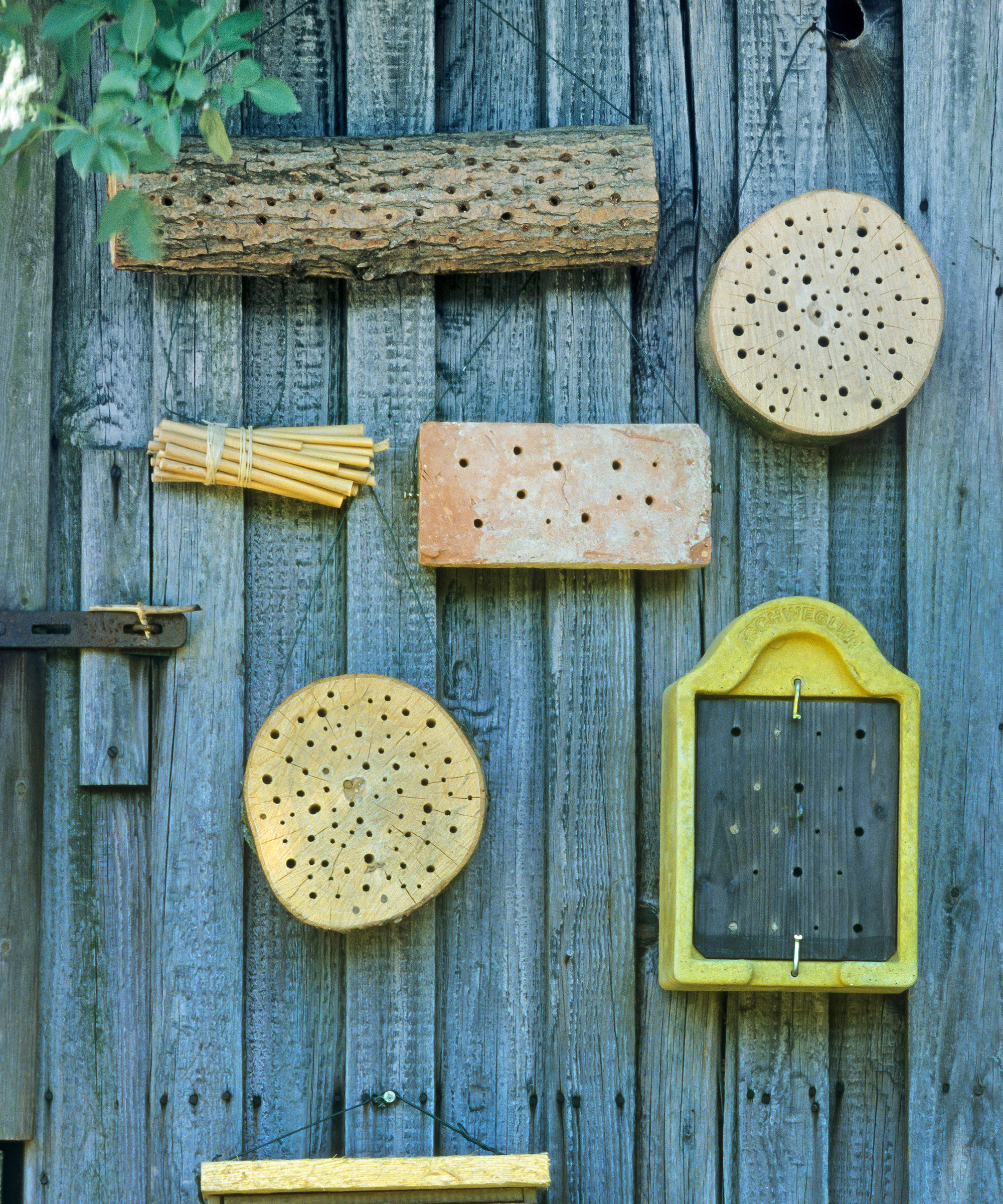
One of the most basic principles behind bug hotel ideas is to create small spaces for insects to crawl into. This could be gaps between twigs and pine cones or cracks in bark. Another simple idea is to create small holes in larger pieces of wood and brick.
These can be done using an electric drill. The holes can be a variety of depths as different depths will work for different species. They will be safe spaces in which insects can lay their eggs.
11. Incorporate a honeycomb pattern
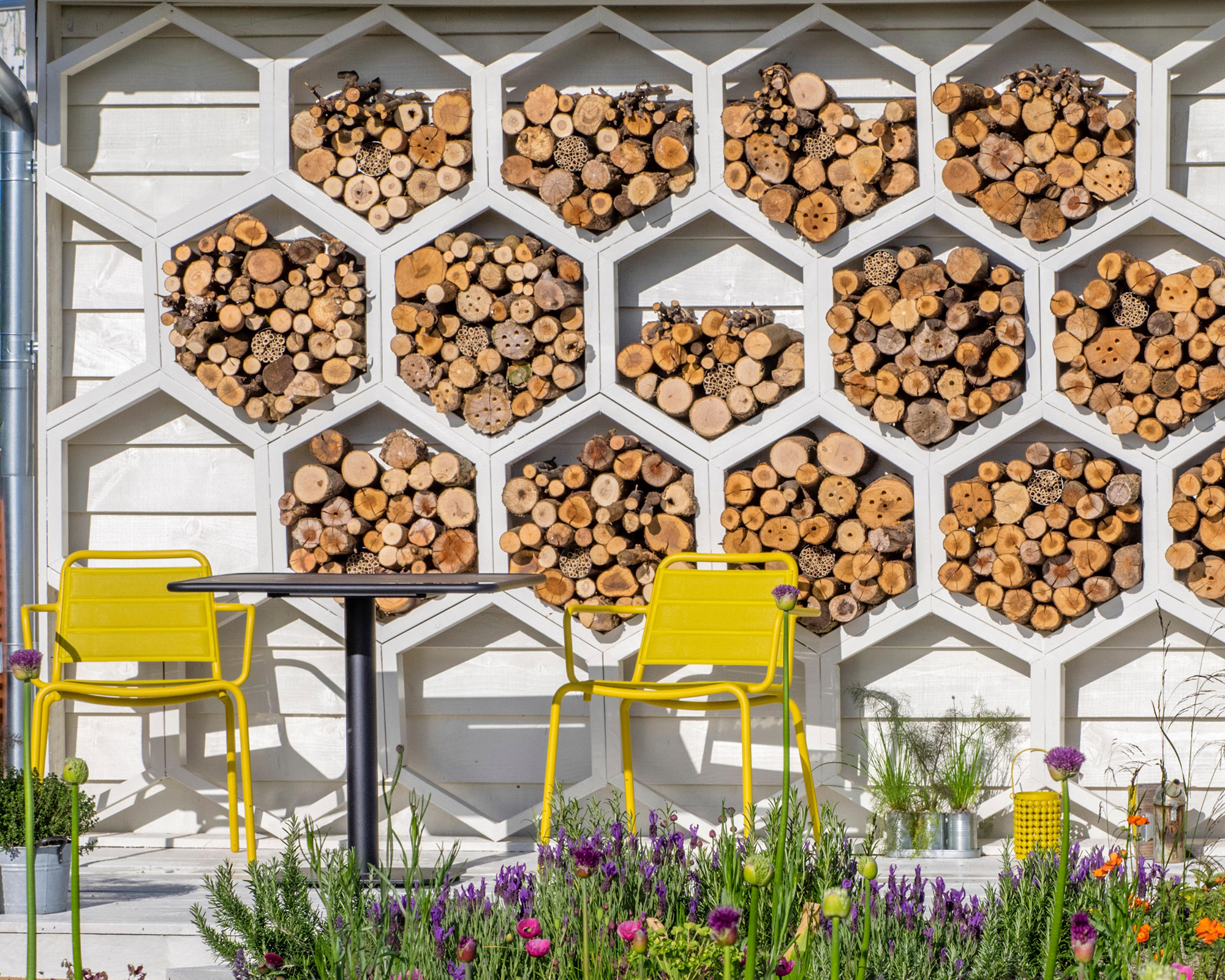
These nooks have been constructed into the six sided hexagon shapes which make up a beehive. Not only do they fit together perfectly, they give a contemporary look which adds interest to this modern garden.
Perhaps the bees won't notice this homage to their queen, but your friends and neighbors will.
12. Create a glow with solar lights
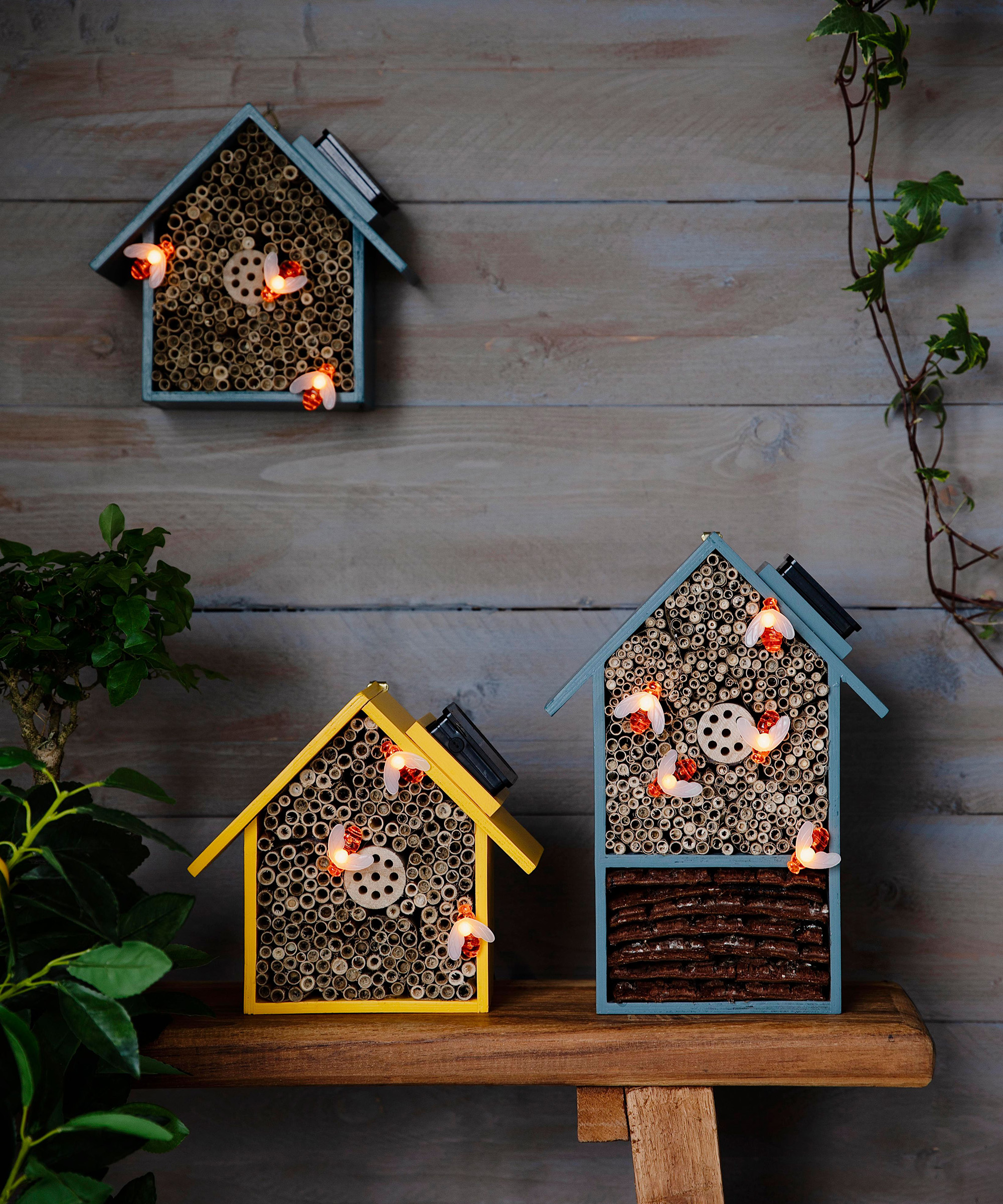
Outdoor lighting ideas are used in the garden as a practical tool but also it helps to highlight key features when the sun goes down. The solar bulbs on these bug houses will give off a gentle glow in the evenings, allowing you to watch the activities of any insects active at night.
The lights of this insect house are in adorable bee shapes and they are slotted onto the hive to give off a soft illumination which will add to the ambiance of your evening.
13. Use a make-your-own kit
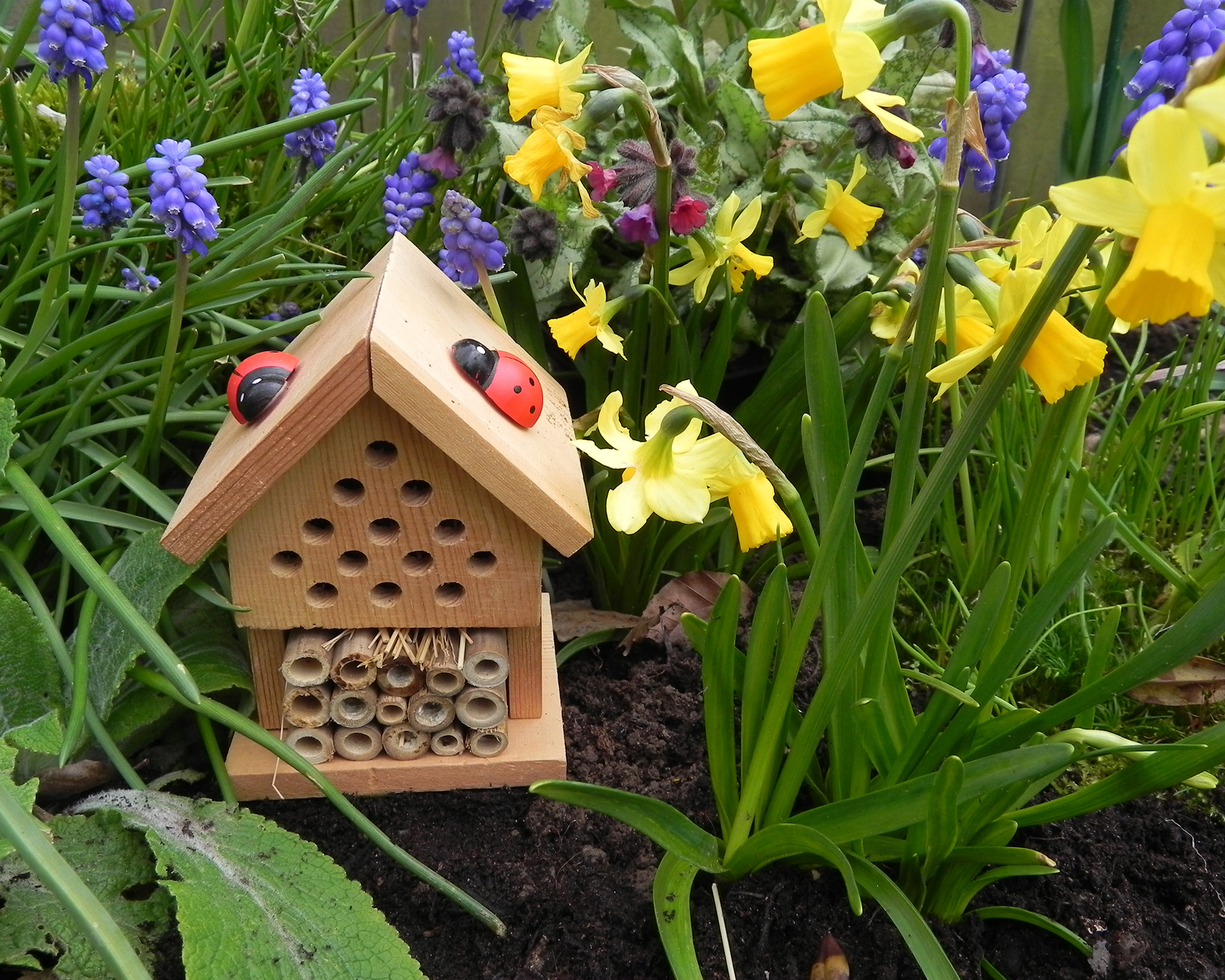
DIY bug hotel kits contain everything you need to put one together. Position it at ground level, to bring color and interest to your flowerbed ideas as well as attracting insects who operate at lower levels. Or fix it up high for flyers-by.
The attachable ladybirds are super cheerful already, but you could add a lick of outdoor paint to the exterior to brighten it up even more.
14. Add them to a living wall display
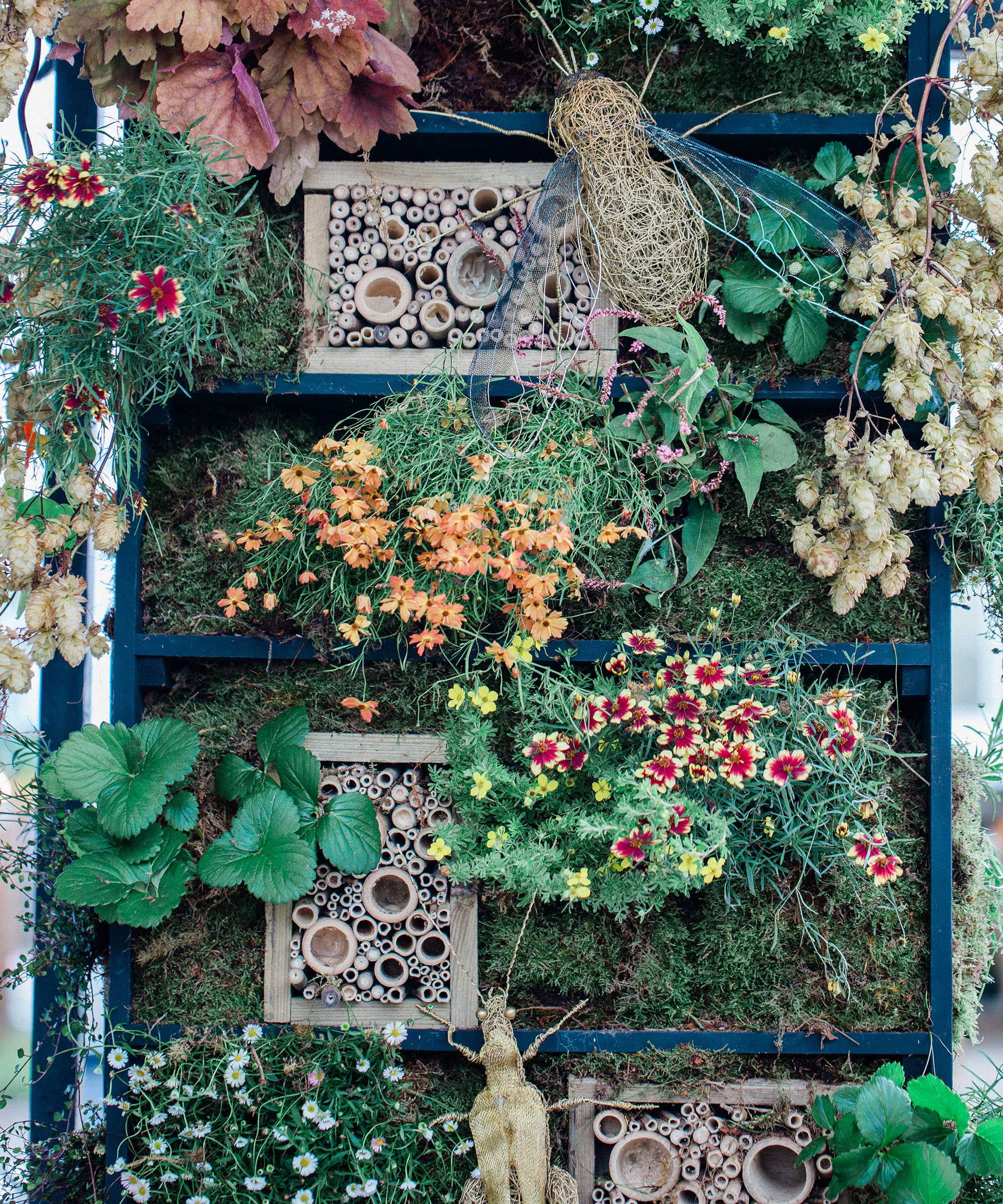
'By creating an outdoor vertical garden on your balcony or in your garden, you also contribute towards biodiversity,' says the team at Bloom & Wild. 'Green living walls and vertical gardens provide roosting and nesting spaces for birds, hibernation opportunities for insects and also nectar and fruit for bees, birds and other insects.'
With this in mind, consider incorporating bug hotels into your vertical garden ideas to make these spaces even more appealing to insects.
15. Make it a fun project for kids

Not only is this bug hotel idea a great garden activity for kids, but it will help teach your little ones about the importance of wildlife. 'Getting your children involved with planting activities can be a great way to bond and teach them about nature,' says Richard Cheshire, expert at Patch Plants. 'It’s an ongoing task, so it can take up a small amount of time during the long summer holidays.'
Start by putting down newspaper and letting them decorate a flower pot with paints. Try finger painting for really young children. Allow the paint to dry and fill the pot with sand. Then simply poke in short pieces of bamboo and straw. The holes will provide nesting places for bugs to burrow into and lay their eggs.
'Gardening gives your children the space to explore and learn about nature. Experts even say it might increase their interest in eating fruit and vegetables!' adds Richard.
What materials can I put in my bug hotel?
There are no hard and fast rules for what materials to include in your bug hotel ideas, but a simple DIY design could include a mix of the following:
- Tree bark
- Short lengths of bamboo
- Twigs
- Pine cones
- Offcuts of wood
- Moss
- Roof tiles
- Terracotta pots
- Old bricks
- Newspaper
- Dried flower heads

How do you make a simple insect hotel?
Use a wooden box or an old draw as the frame. Use planks of wood or tree bark to create divisions and fill the different sections. Use smaller materials, such as dead wood, tubes, stones and tiles, to create spaces for insects to hide. A mix of different materials will mean that you will enjoy a wide variety of visitors.
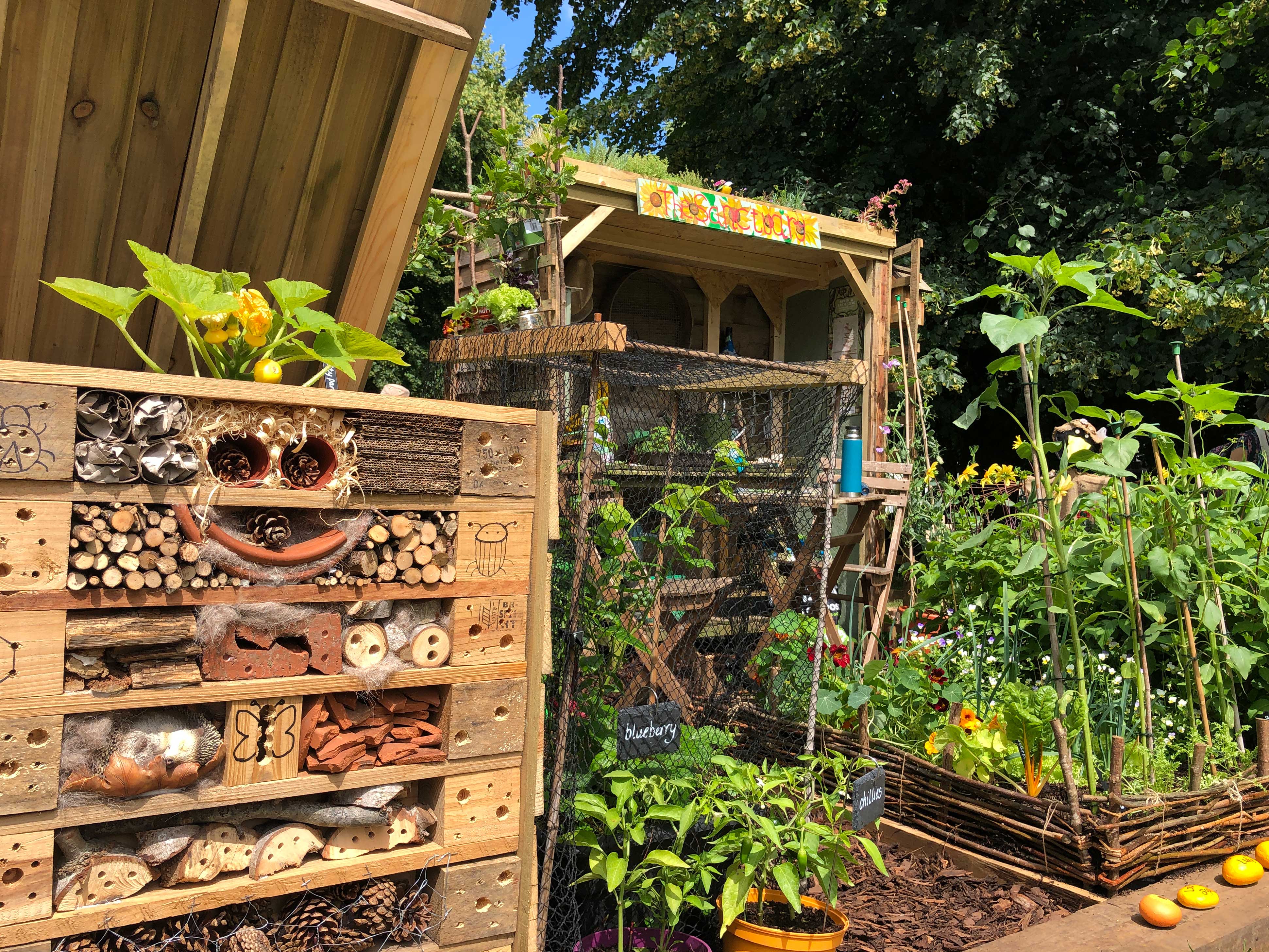
Where should you place a bug hotel?
The best location for your insect hotel ideas depends on the type of bugs you want to attract. Some prefer cooler, damper conditions, while others, such as bees, prefer the sun.
If you're hoping to attract bees, Amateur Gardening expert John Negas suggests that you site your bug hotel where it will receive sunshine for around seven hours a day: 'Solitary bees like it warm and sunny. So I would attach your hotel to a wall, fence, hedge or tree.'
For other insects like woodlice, bugs and beetles, a solitary shaded corner will be inviting. If you are hoping that pollinators will help aid your crop yields then it makes sense to have your bug hotel near a flower garden or kitchen garden. You may want to avoid positioning them in outdoor seating areas as bugs may become bothersome.

Teresa has worked as an Editor on a number of gardening magazines for three years now. So she is lucky enough to see and write about gardening across all sizes, budgets and abilities. She recently moved into her first home and the garden is a real project! Currently she is relishing planning her own design and planting schemes. What she is most passionate about when it comes to gardening are the positive effects it has on our mental health to grow and care for plants, as well as being great for the environment too and help provide food and shelter for wildlife.
